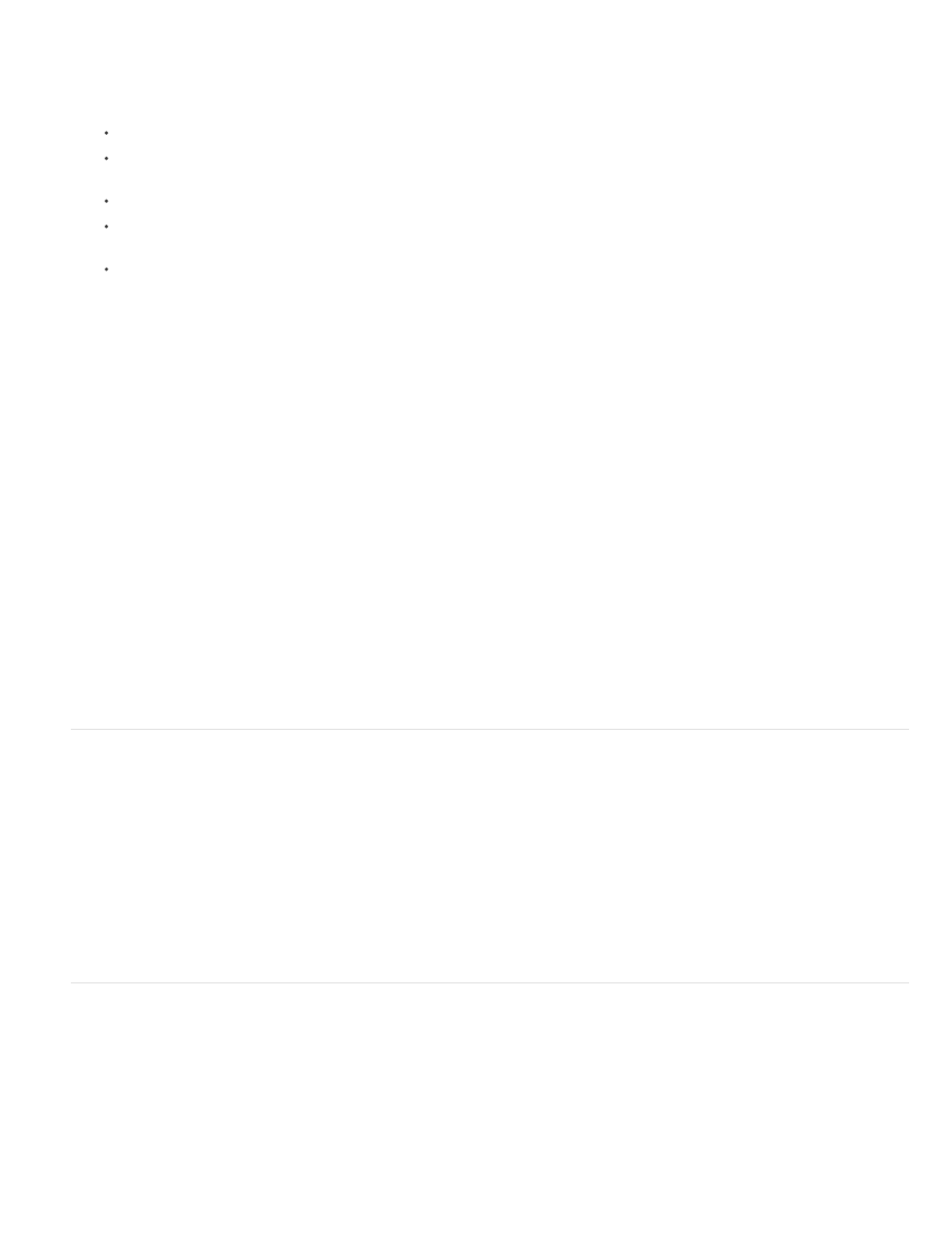Insert code with the insert panel, Insert tags with the tag chooser – Adobe Dreamweaver CC 2014 v.13 User Manual
Page 476

Dreamweaver detects a syntax error, the Syntax Error Information Bar specifies the line in the code where the error occurs. Additionally,
Dreamweaver highlights the error’s line number on the left side of the document in Code view. The info bar is enabled by default, but only
appears when Dreamweaver detects syntax errors in the page.
Apply Comment Lets you wrap comment tags around selected code, or open new comment tags.
Apply HTML Comment wraps the selected code with , or opens a new tag if no code is selected.
Apply // Comment inserts // at the beginning of each line of selected CSS or JavaScript code, or inserts a single // tag if no code is
selected.
Apply /* */ wraps the selected CSS or JavaScript code with /* and */.
Apply ' Comment is for Visual Basic code. It inserts a single quotation mark at the beginning of each line of a Visual Basic script, or
inserts a single quotation mark at the insertion point if no code is selected.
When you are working in a ASP, ASP.NET, JSP, PHP, or ColdFusion file and you select the Apply Server Comment option,
Dreamweaver automatically detects the correct comment tag and applies it to your selection.
Remove Comment Removes comment tags from the selected code. If a selection includes nested comments, only the outer comment tags
are removed.
Wrap Tag Wraps selected code with the selected tag from the Quick Tag Editor.
Recent Snippets Lets you insert a recently used code snippet from the Snippets panel. For more information, see Work with code
snippets.
Move or Convert CSS Lets you move CSS to another location, or convert inline CSS to CSS rules. For more information, see Move/export
CSS rules and Convert inline CSS to a CSS rule.
Indent Code Shifts the selection to the right.
Outdent Code Shifts the selection to the left.
Format Source Code Applies previously specified code formats to selected code, or to the entire page if no code is selected. You can also
quickly set code formatting preferences by selecting Code Formatting Settings from the Format Source Code button, or edit tag libraries by
selecting Edit Tag Libraries.
The number of buttons available in the Coding toolbar varies depending on the size of the Code view in the Document window. To see all of
the available buttons, resize the Code view window or click the expander arrow at the bottom of the Coding toolbar.
You can also edit the Coding toolbar to display more buttons (such as Word Wrap, Hidden Characters, and Auto Indent) or hide buttons that
you don’t want to use. To do this, however, you must edit the XML file that generates the toolbar. For more information, see Extending
Dreamweaver.
Note: The option to view hidden characters, which is not a default button in the Coding toolbar, is available from the View menu (View >
Code View Options > Hidden Characters).
Insert code with the Insert panel
1. Position the insertion point in the code.
2. Select an appropriate category in the Insert panel.
3. Click a button in the Insert panel or select an item from a pop-up menu in the Insert panel.
When you click an icon, the code may appear in your page immediately, or a dialog box may appear requesting more information to
complete the code.
To find out what each button does, position the pointer over it until a tooltip appears. The number and type of buttons available in the Insert
panel varies depending on the current document type. It also depends on whether you’re using Code view or Design view.
Although the Insert panel provides a collection of frequently used tags, it is not comprehensive. To choose from a more comprehensive
selection of tags, use the Tag Chooser.
Insert tags with the Tag Chooser
Use the Tag Chooser to insert in your page any tag in the Dreamweaver tag libraries (which include ColdFusion and ASP.NET tag libraries).
1. Position the insertion point in the code, right-click (Windows) or Control-click (Macintosh), and select Insert Tag.
The Tag Chooser appears. The left pane contains a list of supported tag libraries, and the right pane shows the individual tags in the
selected tag library folder.
2. Select a category of tags from the tag library, or expand the category and select a subcategory.
3. Select a tag from the right pane.
4. To view syntax and usage information for the tag in the Tag Chooser, click the Tag Info button. If available, information about the tag
469
